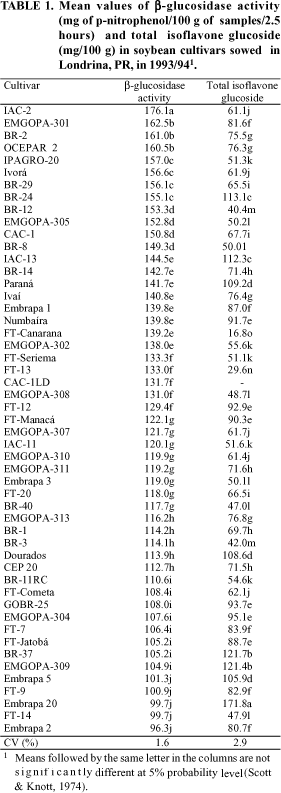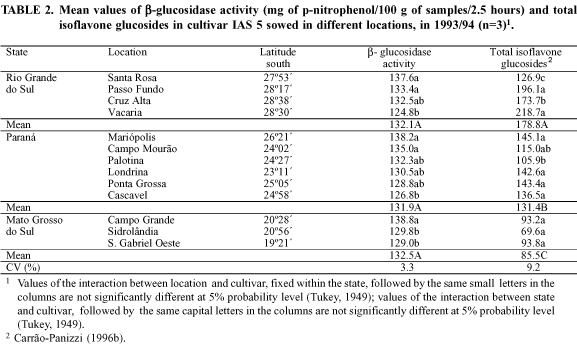The enzyme beta-glucosidase hydrolyses the isoflavone glucosides developing aglycones, which are compounds with anticancer effects, that are also related with the astringency observed in soybean flavor. Due to the importance of this enzyme, a study was carried out to determine beta-glucosidase activity in soybean (Glycine max (L.) Merrill) cultivars with different contents of isoflavone glucosides (enzyme substrate). The enzyme activity was determined in 51 soybean cultivars sowed in Londrina (latitude 23ºS), in Paraná State, Brazil, and in the cultivar IAS 5 from soybean production regions of different Brazilian states. Among the cultivars, a range of variability of 176.1 to 96.3 units of enzyme activity (cultivars IAC-2 and Embrapa 2, respectively) was observed. A significant variability among cultivars could suggest genetic differences. In the states of Rio Grande do Sul, Paraná and Mato Grosso do Sul, the cultivar IAS 5 presented similar average of beta-glucosidase activity: 132.1, 131.9 and 132.5 units, respectively. Among locations in the states, the cultivar IAS 5 presented a variability for enzyme activity from 138.8 to 124.8 units, which were statistically different. In spite of statistics, the numerical values were not too different to assume that environmental conditions affected enzyme activity. A non-significative correlation for isoflavone glucoside concentrations and enzyme activity was observed among cultivars.
environmental effect; Glycine max; aglycones; soybean flavor


